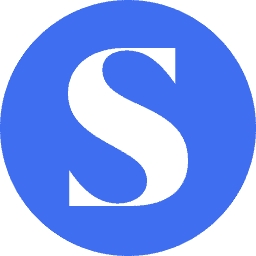Summary
Paid search campaign optimization requires strategic planning, ongoing refinement, and data-driven decision-making to maximize return on ad spend. For digital marketing teams managing complex programs across multiple platforms, paid search optimization becomes both an art and a science.
Mastering Paid Search Fundamentals
Before diving into PPC optimization strategies, understanding the core aspects of paid search provides the foundation for improvements. This section explores the fundamental components that form the backbone of high-performing paid search campaigns:
Search Advertising Mechanics and Impact
Paid search advertising connects businesses with users who are actively searching for related products or services. This intent-driven model delivers qualified traffic based on specific search queries, making it one of the most direct pathways to conversion. When managed properly, paid search campaigns deliver measurable results with precise attribution to marketing efforts and clear return on ad spend calculations.
Compare organic search vs paid search results to identify keyword opportunities that can strengthen both channels.
PPC Optimization Checklist
Successful paid search campaigns share several common structural elements that work together to drive performance. Understanding these foundational components helps marketers build campaigns that consistently deliver results across platforms and industries:
- Keyword Research and Selection: Comprehensive keyword research identifies terms with appropriate search volume, commercial intent, and competition level that align with business objectives.
- Match Type Strategy: Implementation of broad, phrase, and exact match types creates a balanced approach to reach and precision while controlling costs.
- Ad Group Organization: Tightly themed ad groups with 10-20 related keywords enable relevant messaging and precise optimization of bids and budgets.
- Ad Copy Development: Compelling headlines and descriptions incorporate keywords while clearly communicating value propositions and calls-to-action.
- Landing Page Alignment: Performance-optimized landing pages maintain message consistency with Google ads while providing clear conversion paths for visitors.
- Quality Score Management: Ongoing monitoring and improvement of quality scores through relevance and landing page experience enhancements drive lower costs and better positioning.
The integration of PPC campaign optimization elements creates a cohesive framework that supports both immediate performance and long-term optimization potential. When properly implemented, these paid search optimizations work together to build campaigns that can adapt to changing market conditions while consistently driving qualified traffic and conversions.
Performance Metrics and Measurement Standards
Tracking the right metrics provides clarity on campaign performance. Primary metrics include click-through rate (CTR), quality score, conversion rate, cost-per-click (CPC), and cost-per-acquisition (CPA). Secondary indicators like impression share and average position offer contextual insights into market competitiveness and visibility. Understanding how these metrics interact helps identify optimization opportunities across the campaign lifecycle.
Use paid search automation for routine campaign adjustments while maintaining performance oversight.
Digital Marketing Campaign Structure Development
The foundation of paid search optimization begins with campaign architecture. A well-structured account supports budget allocation, relevant messaging, and streamlined management. The following approaches establish the framework for sustainable performance:
Keyword and Ad Group Organization Principles
Campaign structure starts with logical keyword grouping based on themes, products, or services. Each ad group should contain related keywords—generally 10-20 per group—to maintain message relevance. This focused approach improves quality scores while enabling precise control over bidding and budget distribution. Using a mix of match types provides both targeting precision and discovery opportunities.
Ad Creation and Extension Implementation
Ad creation requires intentional alignment between user intent, keyword targeting, and conversion objectives to drive performance beyond surface-level metrics. Crafting high-performing ad assets involves both creative elements and technical implementation considerations:
- Headline Optimization: Headlines that incorporate primary keywords while communicating clear value propositions generate higher click-through rates and quality scores.
- Description Development: Effective descriptions highlight specific benefits, include direct calls-to-action, and address user needs with concise, compelling language.
- Responsive Search Ads: Implementing multiple headlines and descriptions enables machine learning to determine optimal combinations based on user signals and context.
- Sitelink Extensions: Additional navigation options that direct users to specific, relevant sections of your website increase ad real estate and offer alternative conversion paths.
- Callout Extensions: Brief feature or benefit statements that highlight competitive advantages and unique selling points without requiring clicks.
- Structured Snippets: Categorical information that provides specific details about products, services, or features to set proper expectations before the click.
- Price Extensions: Transparent cost information that qualifies traffic and reduces post-click abandonment by setting price expectations.
Landing Page Experience Enhancement
Landing pages serve as the bridge between advertisement promises and conversion actions. Performance-oriented landing pages maintain message consistency with the triggering ad, feature clear calls-to-action, minimize distractions, and load quickly on all devices. Testing elements like headline variations, form length, and button placement can significantly impact conversion rates without requiring campaign structure changes.
Look for a paid search platform that connects your data across publishers to eliminate reporting fragmentation.
Advanced Optimization Methodologies
Moving beyond fundamentals, sophisticated PPC campaigns employ advanced techniques to extract maximum value from their campaigns. These approaches focus on precision targeting, intelligent resource allocation, and machine learning applications:
Bid Management and Budget Distribution
Bid management strategies should align with business objectives, whether focused on impression share, position targets, or return on ad spend goals. Distributing budgets based on performance data ensures resources flow to the highest-performing segments. Advanced platforms provide algorithmic bid optimization that dynamically adjusts bids based on conversion probability and value, outperforming manual adjustments through data science applications.
Location and Device-Based Targeting Refinement
Segmenting performance metrics by these dimensions uncovers optimization opportunities that would otherwise remain hidden in aggregate reporting:
- Geographic Bid Adjustments: Increasing bids in high-performing regions maximizes impression share and traffic volume in locations with demonstrated conversion potential.
- Location Exclusions: Removing or reducing visibility in underperforming areas prevents budget waste and focuses resources on markets with proven results.
- Device-Based Bidding: Implementing separate bid strategies for mobile, tablet, and desktop traffic based on their unique conversion patterns and acquisition costs.
- Mobile-Specific Ad Copy: Tailoring messaging to address mobile users’ immediate needs and typically shorter attention spans with concise, action-oriented language.
- Local Targeting Signals: Incorporating location-specific information in ads through dynamic keyword insertion and location extensions to increase relevance for nearby searchers.
- Cross-Device Attribution: Analyzing the role different devices play in the customer journey to avoid undervaluing touch points that contribute to conversions on other devices.
Systematic Testing Frameworks
Implementing structured A/B testing at the ad, landing page, and audience level generates actionable insights that drive continuous improvement. Testing should follow statistical principles with clear hypotheses, control groups, and significance thresholds. This disciplined approach prevents false conclusions while creating a feedback loop that informs future optimization decisions.
Performance Analysis and Optimization Cycles
Sustainable paid search success depends on rigorous analysis and timely optimizations based on performance data. This cyclical process simplifies raw metrics into actionable insights:
Helpful Performance Indicators and Benchmarks
Establishing baseline performance metrics specific to your industry and business model provides context for ongoing optimizations. Beyond standard engagement metrics, focus on business impact indicators like revenue, profit margin, customer lifetime value, and return on ad spend. These deeper metrics inform decisions about campaign expansion or contraction.
Using Platform Reporting Capabilities
Search platforms provide extensive data visualization and analysis tools that redefine raw performance metrics into actionable insights when properly configured:
- Custom Dashboard Configuration: Tailored reporting interfaces that highlight the specific metrics most relevant to business goals and campaign objectives.
- Scheduled Report Automation: Regularly recurring reports generated and distributed automatically to stakeholders via email, Slack, or Teams to maintain consistent performance visibility.
- Dimension Analysis: Multi-dimensional data breakdowns that reveal performance variations by time of day, day of week, audience segment, or other relevant variables.
- Trend Monitoring: Time-series analysis that identifies gradual shifts in key metrics requiring investigation or intervention before they significantly impact performance.
- Performance Alerts: Automated notifications when metrics exceed predetermined thresholds, allowing rapid response to sudden changes in conversion rates, quality scores, or costs.
- Competitive Benchmarking: Auction insights reporting that tracks impression share, overlap rate, and position relative to competitors to inform adjustments.
- Attribution Modeling: Conversion path analysis that properly values upper-funnel touchpoints and assists rather than focusing exclusively on last-click attribution.
Data-Driven Optimization Implementation
Turning analysis into action requires a systematic approach to campaign refinements. Prioritize changes based on potential impact and implementation effort, focusing first on high-value, low-complexity adjustments. Document all changes to track their impact over time, creating an optimization history that informs future strategy.
Skai’s Paid Search Solution
Our omnichannel platform helps you learn how to optimize a paid search campaign. It eliminates fragmentation across major walled garden media like Google, Microsoft, and Amazon, providing unified views and increased marketing agility for teams managing performance channels. Through proprietary technology for search term analysis and signal enhancement, we help brands uncover keyword inefficiencies to reduce wasted ad spend and optimize bids with business-specific signals like weather patterns, sales data, and competitor pricing.
Our Budget Navigator forecasting tools find optimal spend/ROI balance by analyzing historical performance data and predicting future outcomes, while our experimentation framework allows for scalable incrementality testing across campaigns, ad groups, and keywords. For companies managing complex paid search programs, our platform provides automation like Advanced Automated Actions, insights through Search Term Analysis, and measurement capabilities through Impact Navigator needed to enhance fragmented data into integrated intelligence.
Ready to learn how to optimize a paid search campaign? Book a meeting to discover how our platform can drive measurable improvements in your marketing performance.
——-
Frequently Asked Questions
1. What is paid search optimization?
Paid search optimization is the systematic process of refining search advertising campaigns to improve performance metrics like conversion rate, quality score, and return on ad spend. It involves analyzing campaign data, testing different approaches, and making thoughtful adjustments to keywords, ad copy, bidding strategies, and landing pages to maximize results.
2. How to make search campaigns more efficient?
Making search campaigns more efficient requires both structural improvements and ongoing refinements based on performance data. This includes organizing keywords into tightly themed ad groups, implementing negative keywords to prevent irrelevant clicks, utilizing advanced bid management strategies that align with business goals, and regularly analyzing search term reports to identify new opportunities.
3. Is SEO the same as paid search?
SEO (Search Engine Optimization) and paid search are distinct digital marketing approaches that operate differently in search results. While SEO focuses on improving organic visibility through website optimizations and content strategies, optimizing paid search campaigns involves bidding on keywords to display PPC ads in sponsored positions with a direct cost for each click and immediate visibility, making them complementary but separate channels with different optimization techniques.







